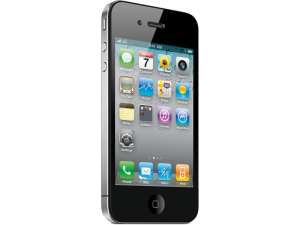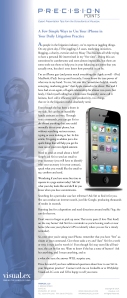As people in the litigation industry, we’re experts at juggling things. On any given day, I’ll be juggling 2-3 cases, marketing initiatives, blogging, a charity, exercise and my Muay Thai business all while trying to have a personal life intertwined in my “free time”. Doing this can sometimes be cumbersome and seem almost impossible, but there are some tools out there to help you in your balancing act; some that you actually own, but don’t even know how powerful it can be.
I’m an iPhone guy (and pretty much everything else Apple as well – iPod, MacBook, iPad), but up until recently, I never knew the true power of what was in my hand. To me, Siri was this “sometimes helpful, mostly annoying, marketing gimic” that Apple created to be clever. Her and I have had an on-again, off-again relationship for almost two years, but lately, I find myself calling her a little more frequently; some call it laziness, but I call it efficiency and productivity, two things, that we in the litigation world, absolutely need.
Even though she has been a thorn in my side, Siri can be an incredibly handy assistant at times. Through voice commands, you can get Siri to do almost anything that you could normally do on your phone, but without searching various menus, typing or even looking at her. In this article, I’m going to address just a few quick things that will help you get the most out of your new digital assistant.
Need to send an email about a brief? Simply ask Siri to send an email to your secretary (you will have to identify who your secretary is in your contact), speak what you would like the email to say, confirm and send.
Wondering if you have some free time to squeeze in a yoga session today? Ask Siri what your day looks like and she’ll let you know when you have commitments.
Searching for a particular case law reference? Ask Siri to find it for you. She can conduct an internet search, just like Google, producing thousands of results in seconds.
Running late for a deposition and need directions around traffic? Yep, she can do that too.
Don’t want to forget to pick up some Thai curry paste (I love Thai food) on the way home? Ask Siri for e reminder as you’re leaving work or near home (she uses your phone’s GPS to identify where you are for a timely reminder).
So, next time you’re using your iPhone, remember that you have “free” assistant at your command. Give these tasks a try and “date” Siri for a week or two; it may just be worth it! Even though Siri may seem like all business, she can be fun too. Want to know if she has a sense of humor? Ask her anything, and I mean anything, and she what she says; the answer WILL surprise you.
Have fun and if you have additional questions about how to use Siri in your litigation practice? Connect with me on LinkedIn or at DMykel@VisuaLexLLC.com and I’d be happy to tell you more.




